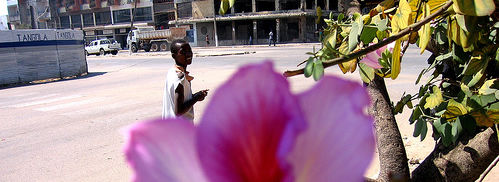Angola

Angola is about to become the best kept secret on the African travel circuit. It is emerging from some 40 years of intense civil conflict, as a consequence of which the physical environment of the nation exists in a reasonable state of preservation. The least that can be said of African warfare is that it temporarily holds in abeyance that most destructive of indigenous fraternities: the ever industrious African woman armed with a machete and a box of matches.
The same, sadly, cannot be said for the nation’s wildlife, which in a state of war falls victim like a domino train to the mass proliferation of automatic weapons. Prior to the rapid acceleration of fighting after the Portuguese collapse in the mid 1970s Angola was one of those Eden like realms of Africa where the diversity and numbers of big game harked back to a time now lost to all of us. Eleven national parks currently exist in the country, all placed under state protection during the period of Portuguese rule, and all now to a greater or lesser extent dysfunctional as wildlife conservancies.
However the region has excited the interest of various global, and in particular South African conservation lobbies and foundations. While the wildlife itself might be largely absent from the ground, the ground itself remains, and one can hope and expect that over the next 20 years or so considerable effort will be made by the global conservation community to restock and rehabilitate this most wonderful of natural African environments.
In the meanwhile a sort of primordial fog hangs over the nation. With the social, and in particular the educational infrastructure in the countryside in ruins, there is an innocence of the outside world that for a brief moment in time offers intrepid travellers the opportunity to be among the first to see it. Of course the coastal cities like the capital Luanda, dizzy with the infusion of oil money, are as grubby, licentious and deceitful as any other of the metropolis’ of the region, but that is a good thing. With the ubiquitous Latino imprint that years of Portuguese domination has left behind, there are good times to be had in such places if the most basic of precautions are applied.
Travel To & Within Angola
Flights to Angola Accommodation in Angola
Why Travel To Angola
Angola will not be on mainstream African travel network for quite a while, and so there are two potential ways to see it. The first is to contact a South African or Namibian specialist overland travel outfit, and with a rigged up convoy and a savvy guide, set off. This is going to cost you a lot of money, but if you have it, it is more than possible. The second way is to go there and take your chances.
What you will see will not be the quintessence of Africa as it is splashed all over the promotional literature of Kenya, South Africa, Zambia, Moçambique or Botswana. You will see a destination in incubus, and moreover you will probably have the road almost entirely to yourself. It will be rough travel, but good rough travel. The road is wide, it is long and it is varied. From the chimpanzee habitat of the Congo rainforest in the north, to the central highlands, and the arid gravel plains of the south, there is a great deal to see. If you take a chance the experience will remain with you long after Angola has tided up it’s image and joined the package tour family where it is destined one day to be.
When to Visit Angola
Since Angola has no particular travel industry there are no peak or quiet seasons to worry about, so only seasonal climate variations matter, and these follow the usual Southern African advisories. Angola is in the summer rainfall zone, which means that the months from early November to mid March can be hot, humid and wet, and particularly so on the coast and the further north you travel. Winter temperatures are much more pleasant, and usually the period is dry with low humidity. It also goes without saying that malaria and other tropical maladies are less of a problem during this time.
Travel Warning
The writer of the Wikitravel post on Angola makes this most African of observations about overland travel in Angola: ‘If possible,’ he writes, ‘join with several cars of the same make and model because of the possible need for spare parts.’
Indeed, and there are a handful of other considerations to make too. Firstly landmines. Angola is one of the global landmine hotspots, so keep a look out for HALO Trust tape or demarcations, or anything, even a circle of stones, that seems to indicate that something is there. That something could be a landmine. You will, of course, be struck immediately at the astonishing number of people in Angola missing either one or several limbs, not to mention other associated scars from this most pernicious of weapons of war, so perhaps this warning will be self evident on arrival.
The matter is slowly being attended to, however, but slow is the critical word.
Cabinda Province in the north should be avoided due to ongoing violence and unrest.
National road networks, although being improved, are still extremely poor in places.
Street crime in Luanda is widespread, slick and very creative. Violence can occasionally be a factor, and the usual rules of common sense apply, the main one being do not wonder around the unlit streets alone at night, and avoid shanty towns or squatter settlements.
Overland travel is best undertaken in the company of a trusted friend or experienced person, even if you cannot manage a convoy of identical vehicles.
Angola is a malaria zone, and is subject to a range of tropical diseases including cholera.